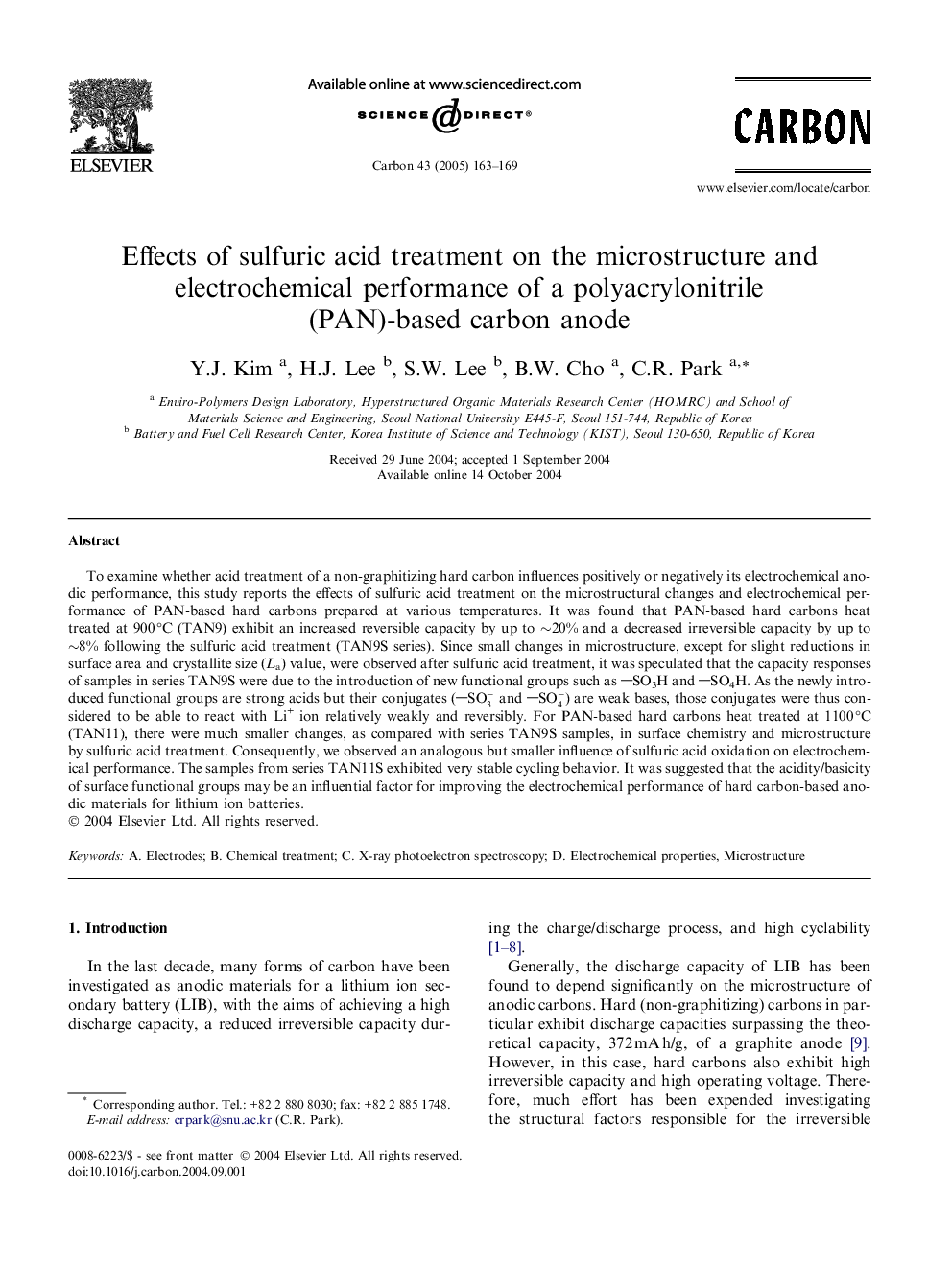| Article ID | Journal | Published Year | Pages | File Type |
|---|---|---|---|---|
| 10611051 | Carbon | 2005 | 7 Pages |
Abstract
To examine whether acid treatment of a non-graphitizing hard carbon influences positively or negatively its electrochemical anodic performance, this study reports the effects of sulfuric acid treatment on the microstructural changes and electrochemical performance of PAN-based hard carbons prepared at various temperatures. It was found that PAN-based hard carbons heat treated at 900 °C (TAN9) exhibit an increased reversible capacity by up to â¼20% and a decreased irreversible capacity by up to â¼8% following the sulfuric acid treatment (TAN9S series). Since small changes in microstructure, except for slight reductions in surface area and crystallite size (La) value, were observed after sulfuric acid treatment, it was speculated that the capacity responses of samples in series TAN9S were due to the introduction of new functional groups such as SO3H and SO4H. As the newly introduced functional groups are strong acids but their conjugates (SO3- and SO4-) are weak bases, those conjugates were thus considered to be able to react with Li+ ion relatively weakly and reversibly. For PAN-based hard carbons heat treated at 1100 °C (TAN11), there were much smaller changes, as compared with series TAN9S samples, in surface chemistry and microstructure by sulfuric acid treatment. Consequently, we observed an analogous but smaller influence of sulfuric acid oxidation on electrochemical performance. The samples from series TAN11S exhibited very stable cycling behavior. It was suggested that the acidity/basicity of surface functional groups may be an influential factor for improving the electrochemical performance of hard carbon-based anodic materials for lithium ion batteries.
Related Topics
Physical Sciences and Engineering
Energy
Energy (General)
Authors
Y.J. Kim, H.J. Lee, S.W. Lee, B.W. Cho, C.R. Park,
